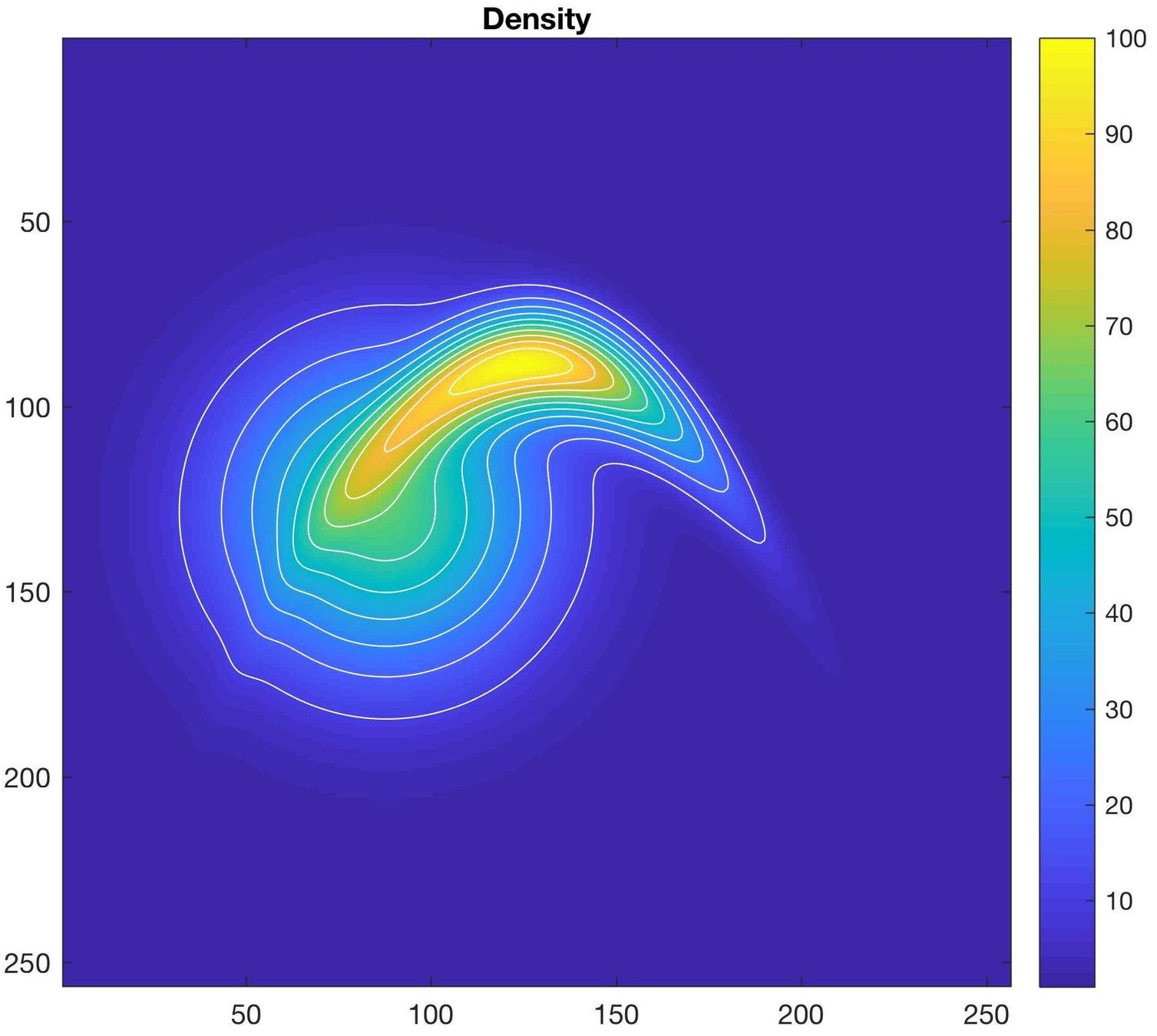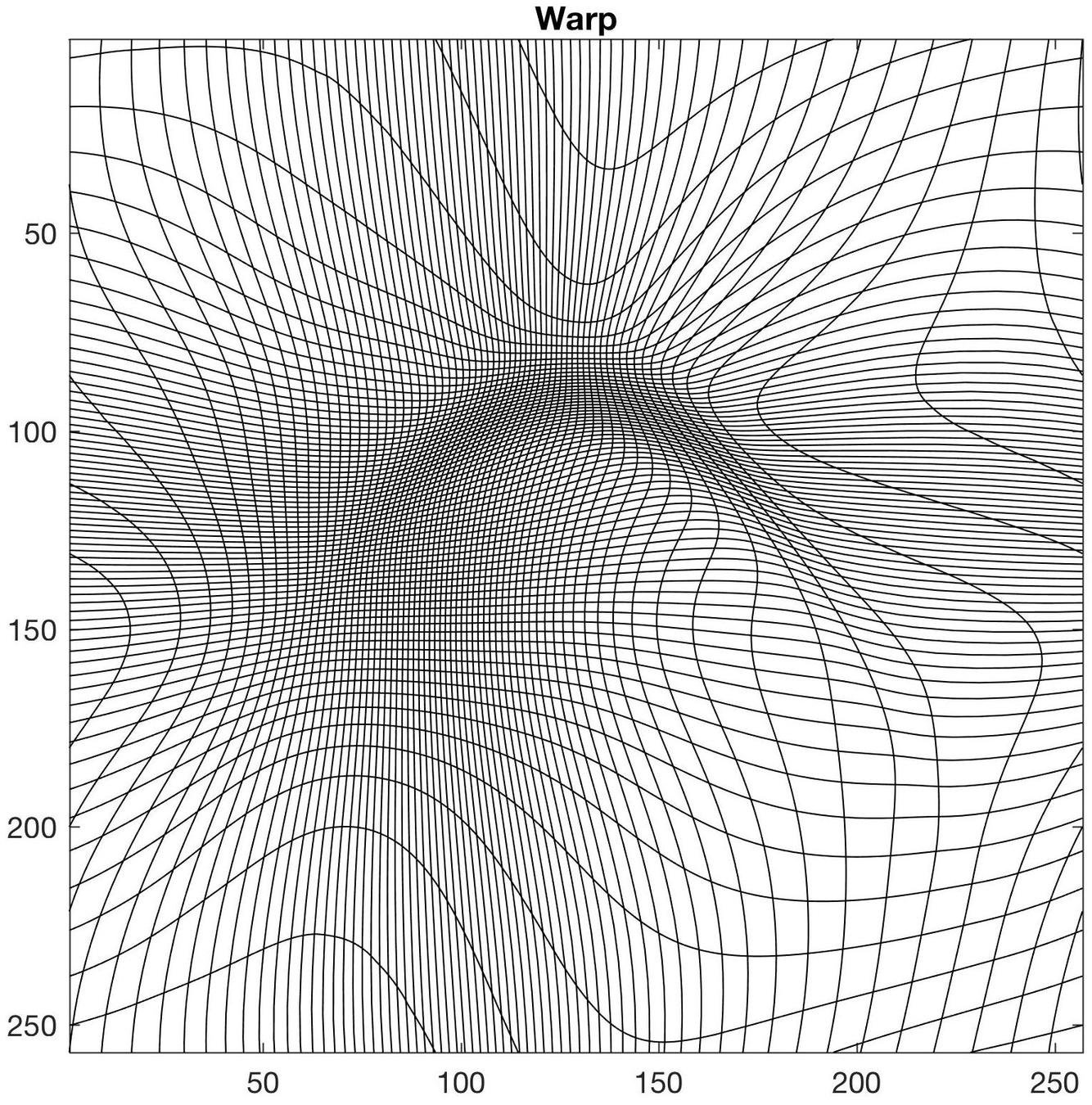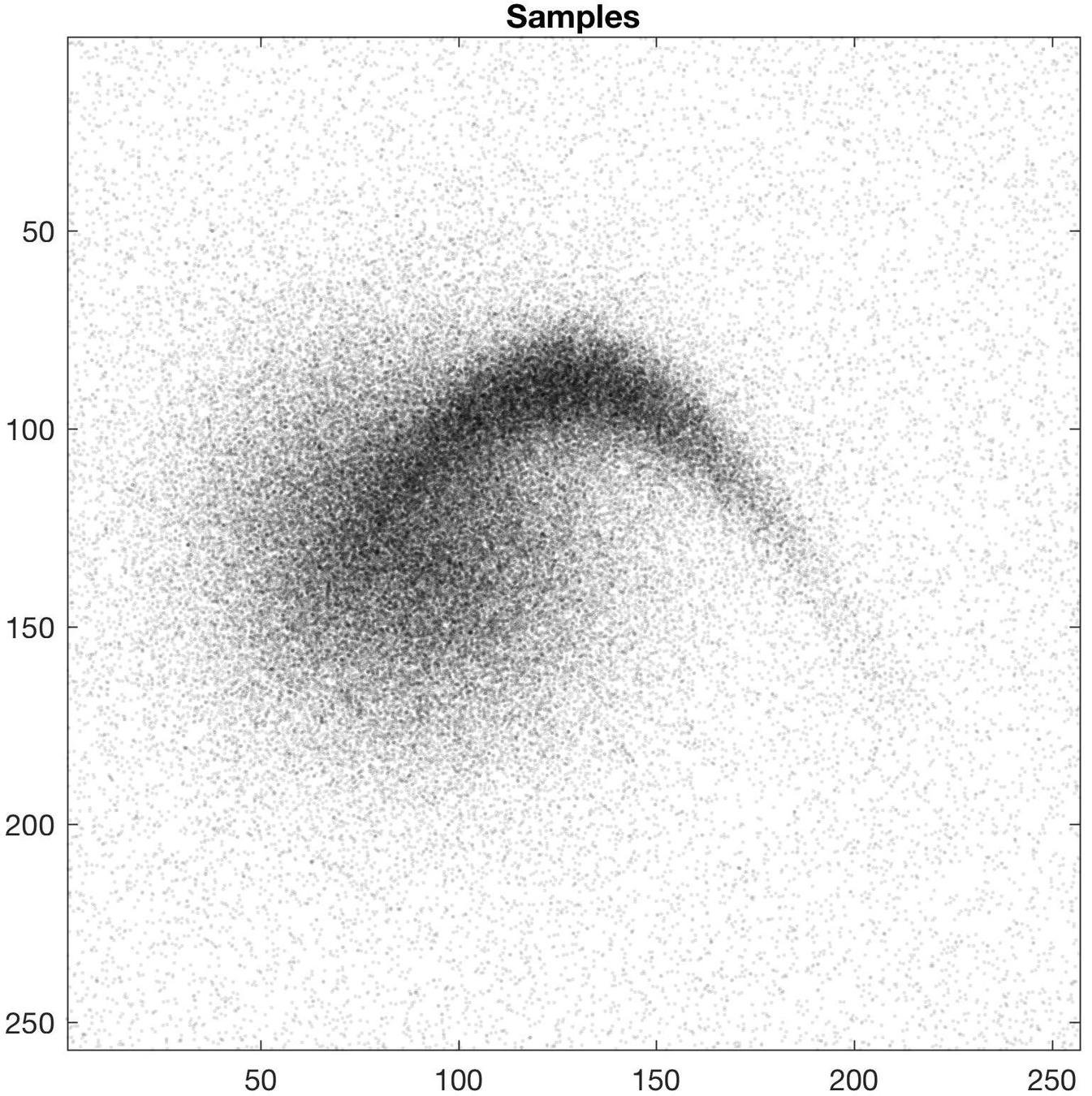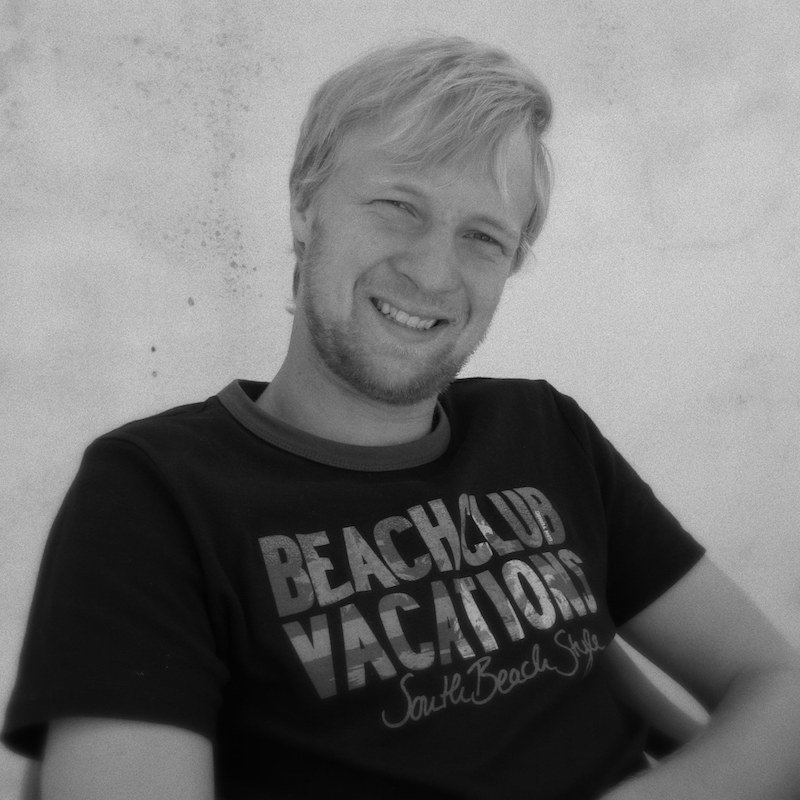Diffeomorphic random sampling by optimal information transport
Klas Modin




Joint work with


Sarang Joshi
University of Utah
Martin Bauer
Florida State University
Draw samples from non-uniform distribution on \(M\)
Smooth probability densities
Problem 1: given \(\mu\in\mathrm{Prob}(M)\) generate \(N\) samples from \(\mu\)
Most cases: use Monte-Carlo based methods
Special case here:
- \(M\) low dimensional
- \(\mu\) very non-uniform
- \(N\) very large
transport map approach
might be useful
Transport problem
Problem 2: given \(\mu\in\mathrm{Prob}(M)\) find \(\varphi\in\mathrm{Diff}(M)\) such that
Method:
- \(N\) samples \(x_1,\ldots,x_N\) from uniform distribution \(\mu_0\)
- Compute \(y_i = \varphi(x_i) \)
Diffeomorphism \(\varphi\) not unique!
Optimal transport problem
Problem 3: given \(\mu\in\mathrm{Prob}(M)\) find \(\varphi\in\mathrm{Diff}(M)\) minimizing
under constraint \(\varphi_*\mu_0 = \mu\)
Studied case: (Moselhy and Marzouk 2012, Reich 2013, ...)
- \(\mathrm{dist}\) = \(L^2\)-Wasserstein distance
- \(\Rightarrow\) optimal mass transport problem
- \(\Rightarrow\) solve Monge-Ampere equation (heavily non-linear PDE)
Our notion:
- use optimal information transport
Optimal information transport
Remarkable fact:
- solution to transport problem almost explicit in this setting
Right-invariant Riemannian \(H^1\)-metric on \(\mathrm{Diff}(M)\)
Use induced distance on \(\mathrm{Diff}(M)\)
Riemannian submersion

\(H^1\) metric
Fisher-Rao metric = explicit geodesics
Horizontal lifting equations
Theorem: solution to optimal information transport is \(\varphi(1)\) where \(\varphi(t)\) fulfills
where \(\mu(t)\) is Fisher-Rao geodesic between \(\mu_0\) and \(\mu\)
Leads to numerical time-stepping scheme: Poisson problem at each time step
MATLAB code: github.com/kmodin/oit-random
Simple 2D example


Warp computation time (256*256 gridsize, 100 time-steps): ~1s
Sample computation time (10^7 samples): < 1s

Summary
Pros
- Can handle very non-uniform densities
- Draw samples ultra-fast once warp is generated
Cons
- Useless in high dimensions (dimensionality curse)
THANKS!
Slides available at: slides.com/kmodin
MATLAB code available at: github.com/kmodin/oit-random